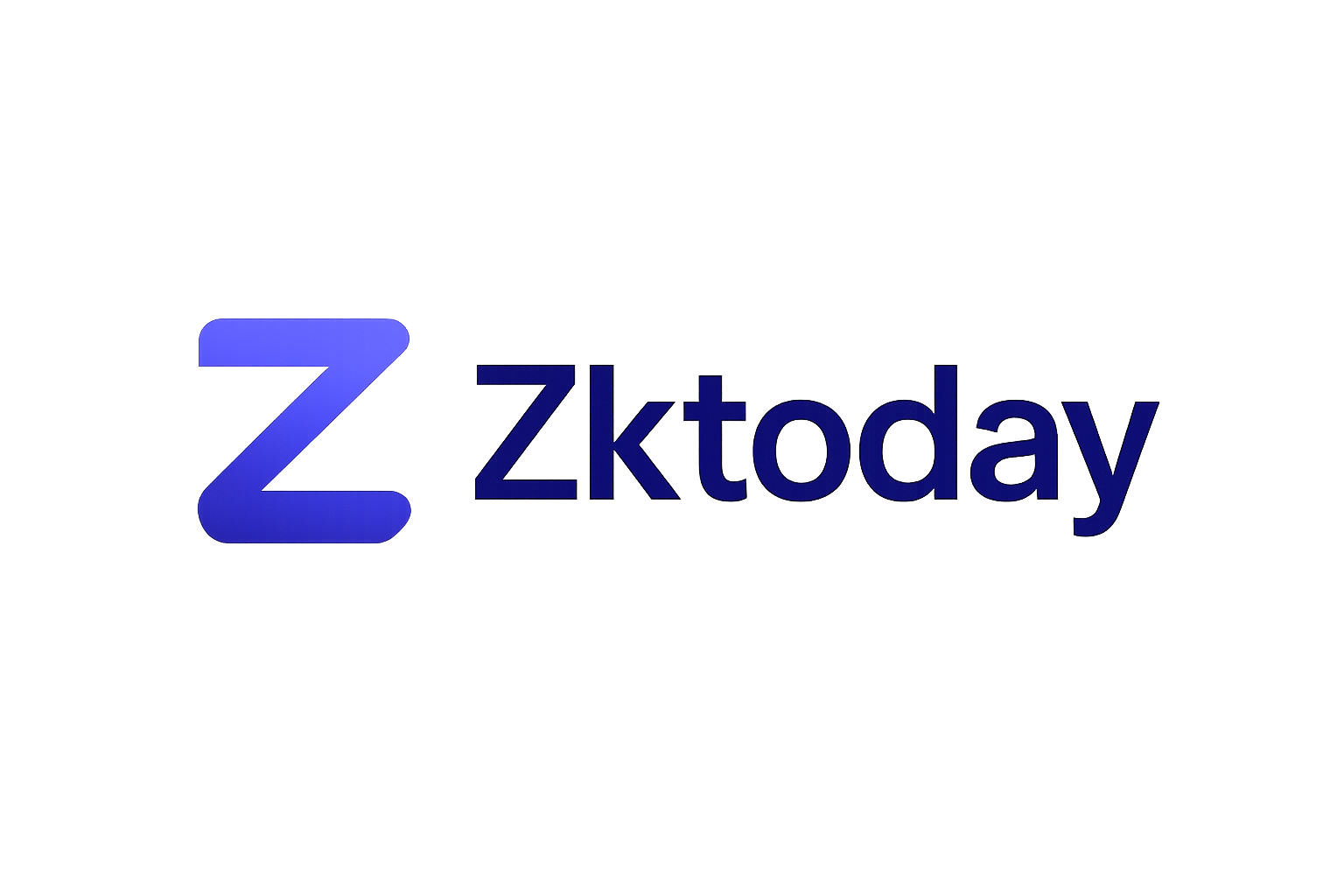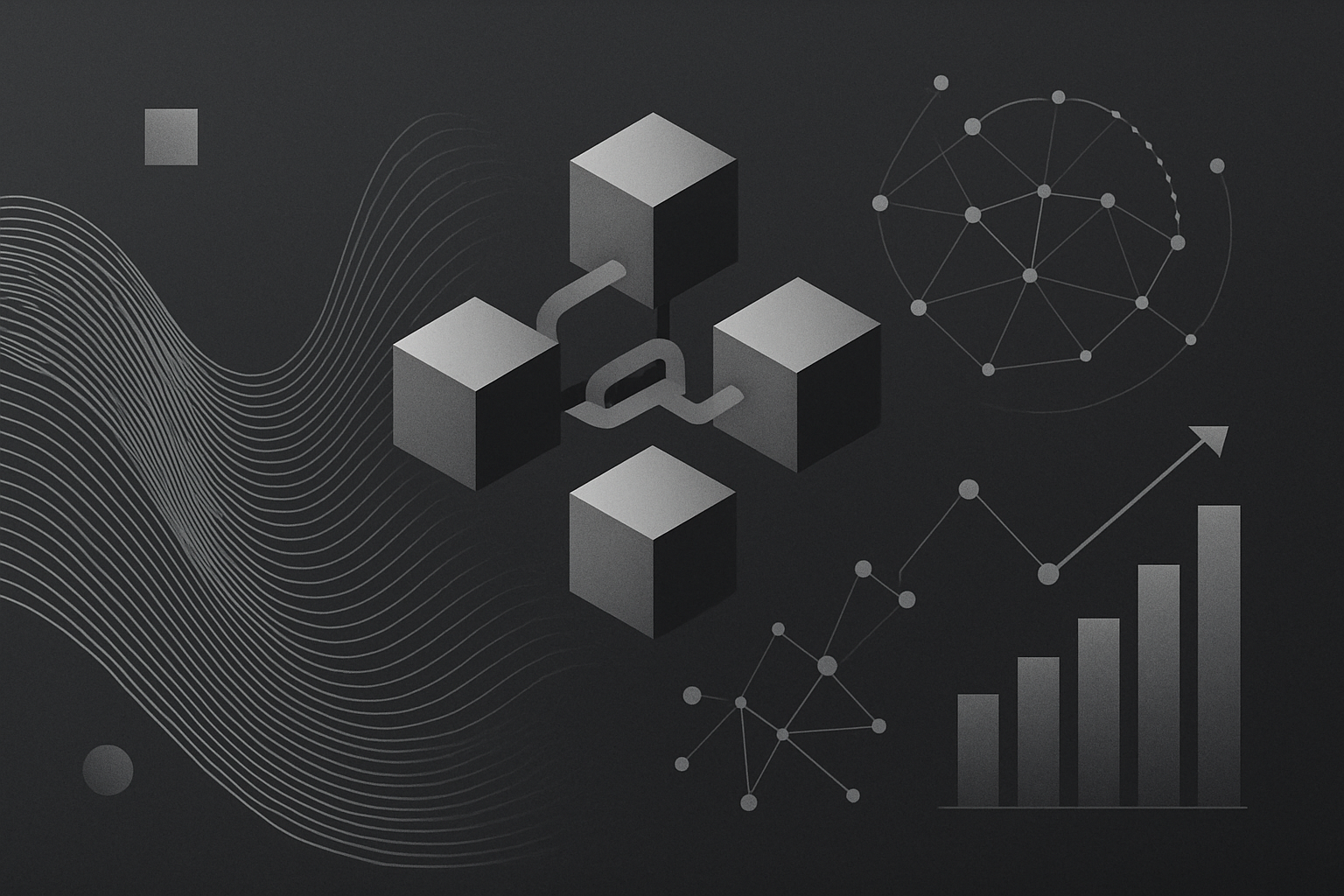
Blockchain scalability is at a crossroads. As decentralized applications and on-chain games push the limits of existing infrastructure, the need for fast, flexible, and cost-effective scaling solutions has never been more urgent. Enter ephemeral rollups: a transformative approach to adaptive blockchain scaling that is quickly gaining traction among developers and investors alike.

Why Temporary Rollups? The Scalability Imperative
Even so-called “low-fee” blockchains can become prohibitively expensive as usage scales. Traditional architectures, whether monolithic or modular, often struggle to keep up with the demands of high-throughput applications such as real-time gaming, DeFi, and social platforms. Ephemeral rollups address this head-on by creating temporary, high-speed execution environments that process transactions off-chain, before securely committing results back to the main chain.
This approach is not just an incremental improvement, it represents a paradigm shift. Rather than relying on permanent, resource-intensive layers, ephemeral rollups are spun up on-demand, used for as long as needed, and then seamlessly released. This elasticity enables blockchains to handle unpredictable traffic spikes and complex workloads without sacrificing security, composability, or user experience.
Key Features Driving Adoption of Ephemeral Rollups
Top 5 Features of Ephemeral Rollups
-

Ultra-Low Latency: Ephemeral Rollups deliver end-to-end transaction latencies below 50 milliseconds globally, enabling real-time applications like gaming and financial services to operate seamlessly. (Solana Compass)
-
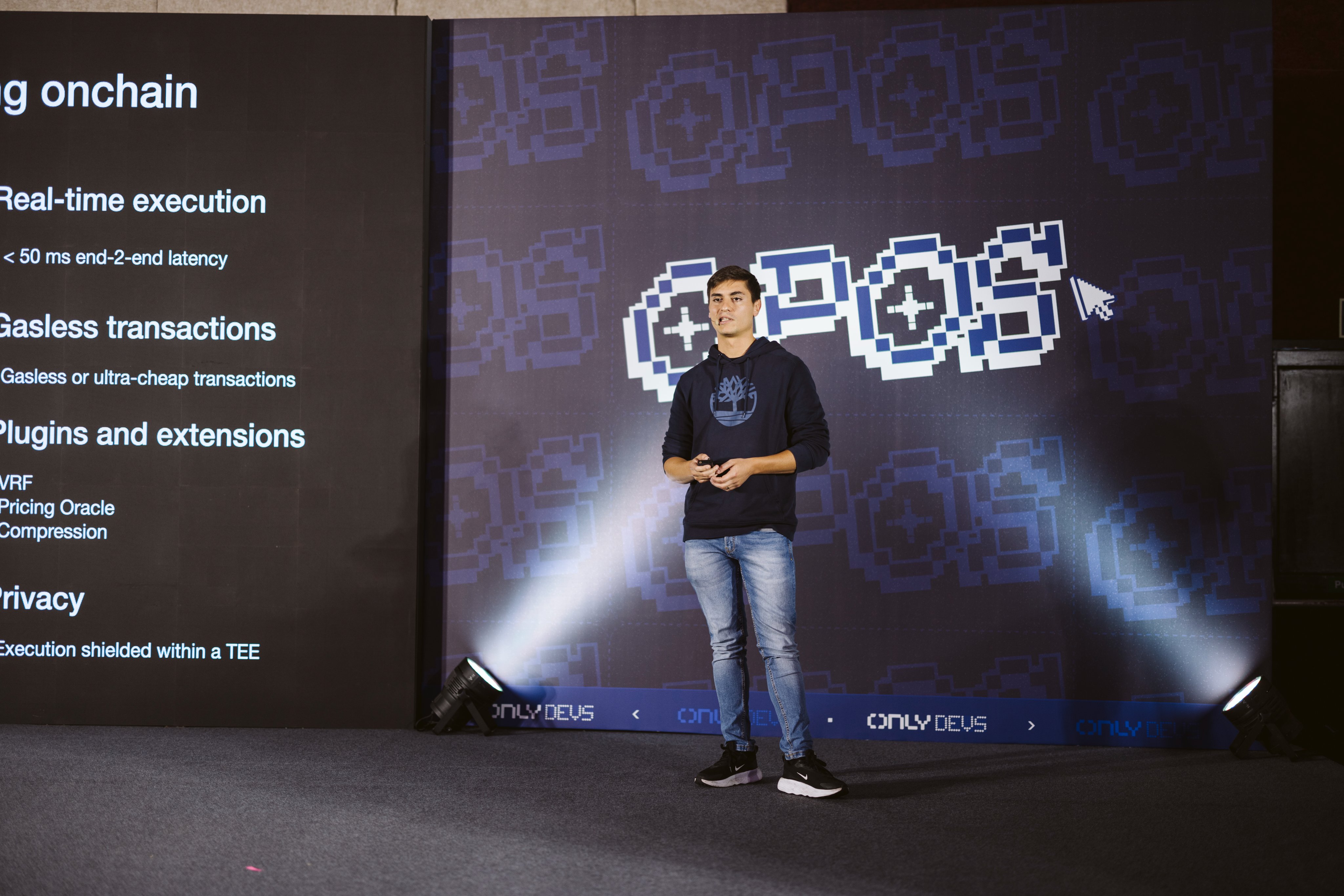
Gasless Transactions: By processing transactions off-chain, Ephemeral Rollups enable zero-fee interactions, removing cost barriers and supporting mass adoption of decentralized applications. (MagicBlock Documentation)
-
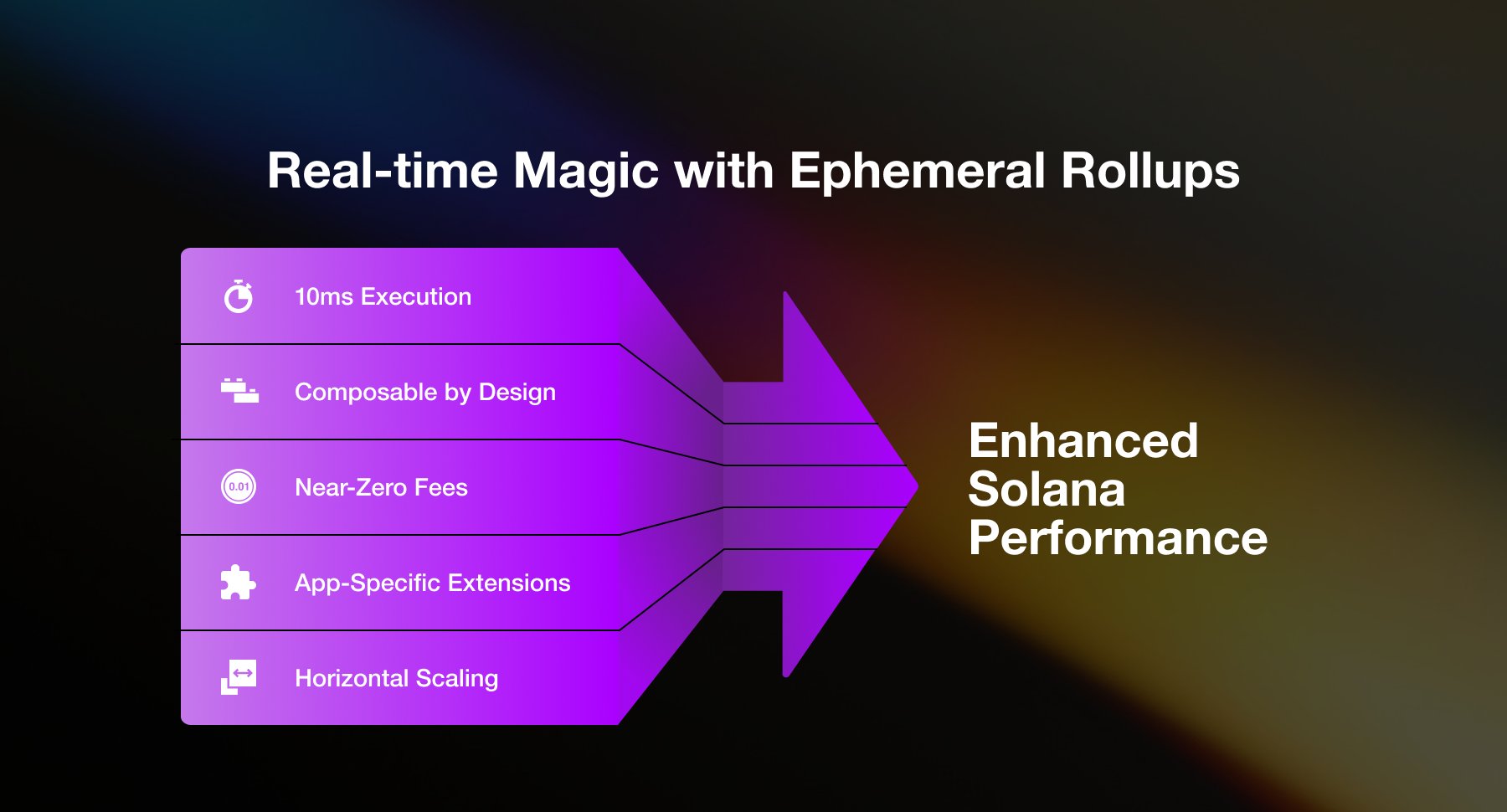
Horizontal Scalability: Multiple Ephemeral Rollup instances can be spun up on demand, allowing the network to handle millions of transactions per second without performance degradation. (Solana Compass)
-
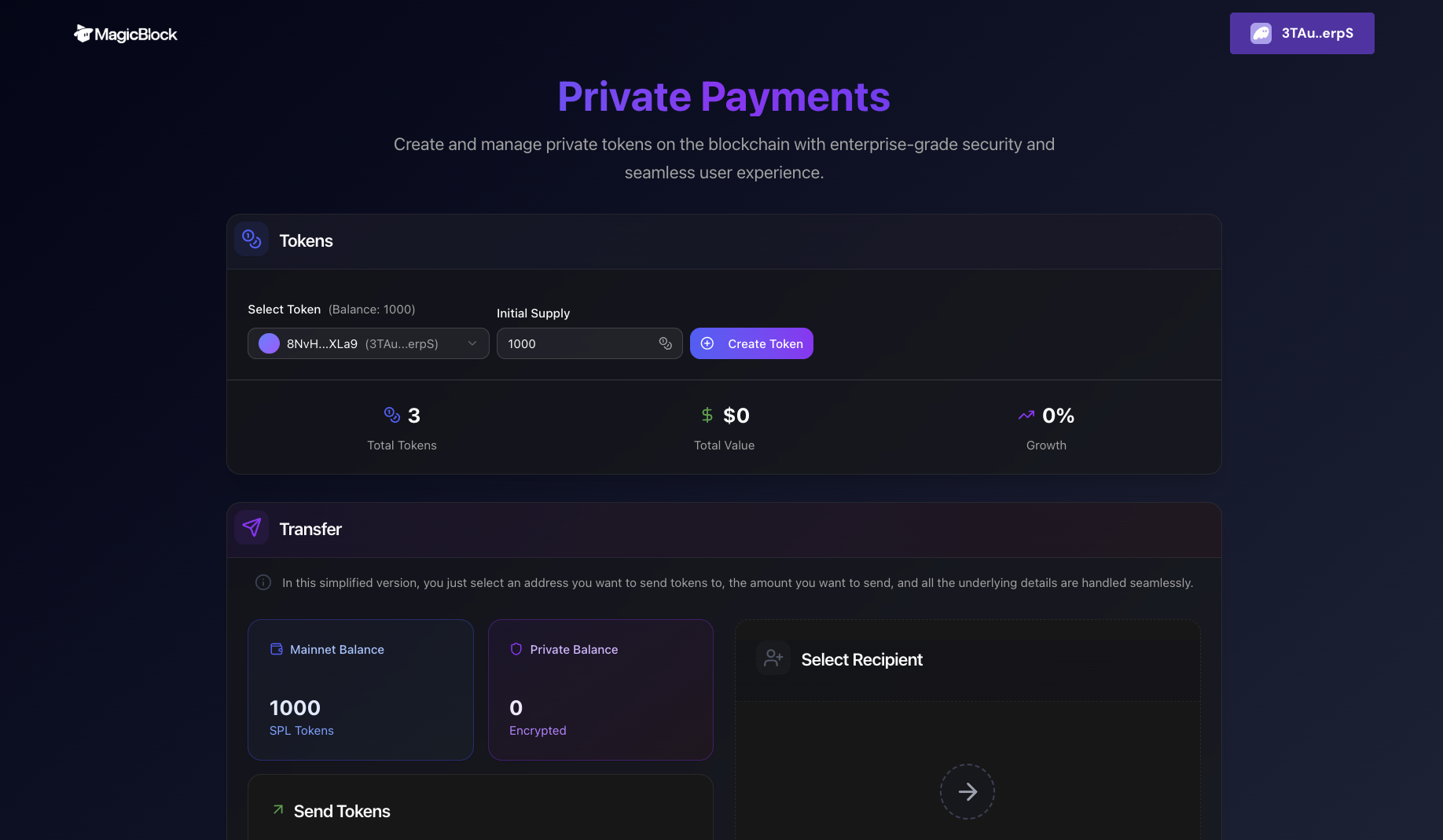
Maintained Composability: Ephemeral Rollups preserve full composability with existing smart contracts on the main chain, ensuring seamless integration and interoperability across the blockchain ecosystem. (Solana Compass)
-
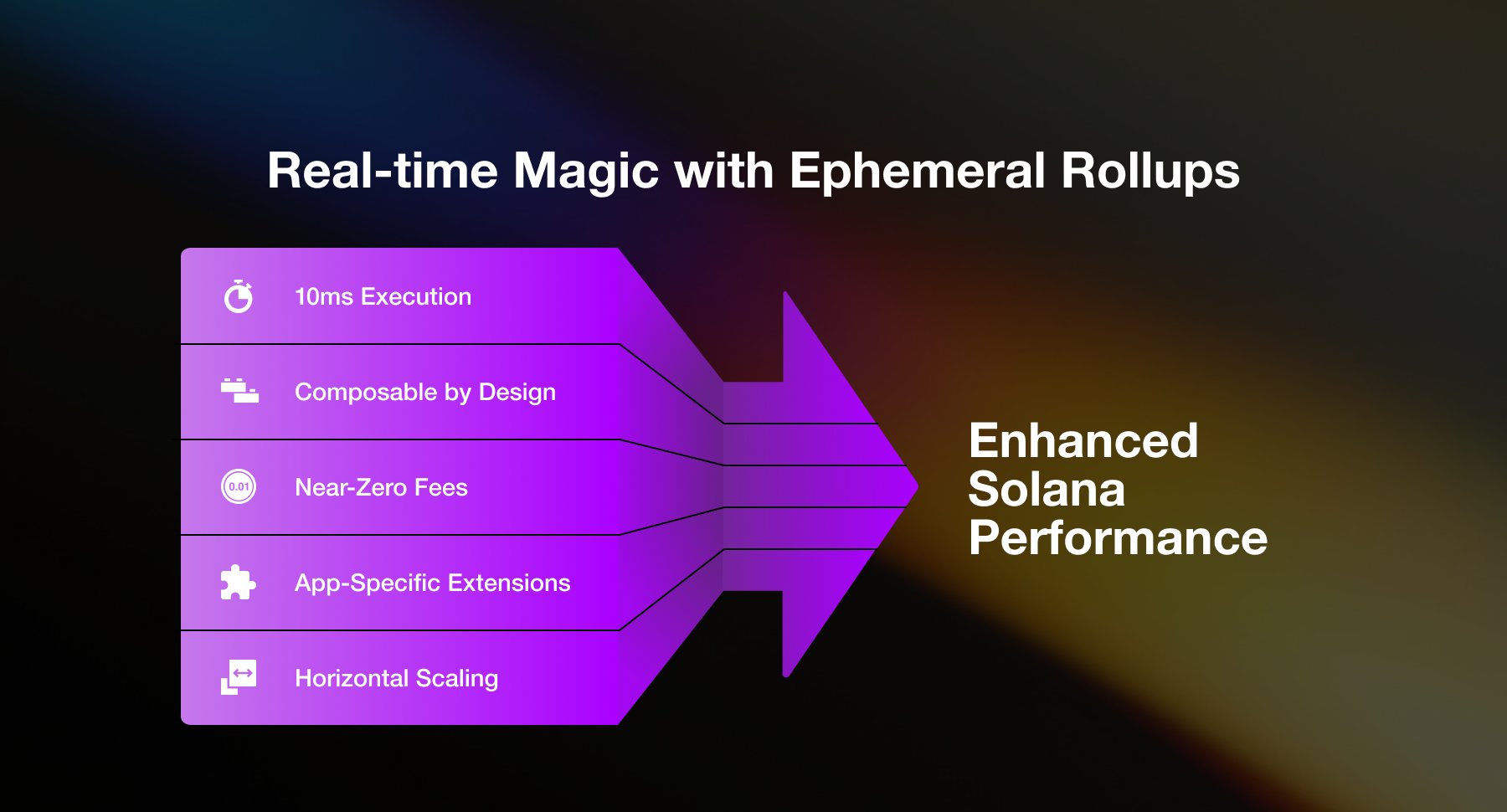
Secure Settlement: State changes processed off-chain are periodically committed back to the main chain with robust security mechanisms, including fraud proofs, ensuring data integrity and trust. (MagicBlock Guide)
Let’s break down the core attributes that set ephemeral rollups apart from legacy scaling solutions:
- Ultra-Low Latency: With end-to-end latencies below 50 milliseconds globally, ephemeral rollups deliver the responsiveness required for real-time applications, an achievement beyond the reach of most current L1 or L2 networks.
- Gasless Transactions: By processing transactions off-chain and only settling state changes, users can enjoy zero-fee interactions. This is a game-changer for onboarding mainstream audiences and supporting microtransactions at scale.
- Horizontal Scalability: Multiple ephemeral rollup instances can be deployed simultaneously, enabling the system to process millions of transactions per second. This on-demand scaling is critical for applications with volatile or unpredictable usage patterns.
- Maintained Composability: Unlike many L2s, ephemeral rollups retain full composability with the main chain. Developers can leverage existing smart contracts and liquidity without the friction of bridges or wrapped assets.
- Secure Settlement: State changes are periodically committed back to the base layer, with fraud proofs and other integrity mechanisms ensuring that security is never compromised.
How Ephemeral Rollups Work: A Strategic Overview
The lifecycle of an ephemeral rollup is designed for maximum efficiency and security. It typically unfolds in five stages:
- Delegation: Specific state accounts are assigned to the rollup via a delegation program, allowing developers to set parameters like session duration and commit frequency.
- Smart Routing: Transactions are intelligently routed to the optimal execution layer, main chain or ephemeral rollup, via an RPC router.
- Fast Execution: A high-speed runtime environment is spun up, often close to users geographically, to minimize latency and maximize throughput.
- Secure Settlement: Periodically, state changes are committed back to the main chain, with cryptographic guarantees of integrity.
- Undelegation: When the session ends, accounts are released back to the base layer, fully synchronized and composable.
This modular, session-based approach is already proving its value in high-demand verticals. For example, in blockchain gaming, ephemeral rollups enable seamless in-game transactions and real-time state updates without compromising on decentralization. In DeFi, they unlock high-frequency trading and complex derivatives by eliminating the latency and cost bottlenecks of legacy systems. For a deeper dive into how this architecture is reshaping Web3 scalability, see this analysis.
Adaptive Blockchain Scaling: Unlocking New Possibilities
The implications are profound. By enabling elastic, on-demand scaling with full composability and security, ephemeral rollups are redefining what’s possible for decentralized applications. Developers are no longer forced to choose between performance and decentralization. Instead, they can architect solutions that rival the speed and user experience of traditional Web2 platforms, while maintaining the trustless guarantees of blockchain.
As the ecosystem matures, expect to see ephemeral rollups play a pivotal role in everything from on-chain social networks to high-frequency DeFi protocols. The next wave of blockchain innovation will be shaped by solutions that are as dynamic and adaptive as the applications they support.
Looking ahead, the competitive edge offered by ephemeral rollups is already being recognized by leading projects and infrastructure providers. Solana’s integration of temporary rollup architectures has set a new benchmark for real-time dApp performance, eliminating the friction that once separated on-chain and off-chain experiences. The ability to spin up disposable, high-throughput execution environments on demand is no longer a theoretical advantage, it’s a practical necessity for any application that seeks to scale without compromise.
Strategic Implications for Developers and Investors
For developers, ephemeral rollups represent a strategic toolkit for building resilient, future-proof applications. By abstracting away the complexities of scaling and settlement, teams can focus on product innovation rather than infrastructure bottlenecks. This is particularly relevant in sectors like gaming, where user retention is directly tied to responsiveness and seamless gameplay. In DeFi, the ability to execute thousands of trades per second with negligible fees opens the door to entirely new financial primitives and user behaviors.
Investors should closely monitor the evolution of ephemeral rollup deployments on Solana and other high-performance chains. Early adoption signals not just technical maturity, but also market readiness for mainstream, scalable blockchain applications. The projects that effectively leverage on-demand scaling will be best positioned to capture value as user expectations continue to rise.
Leading Projects Leveraging Ephemeral Rollups
-
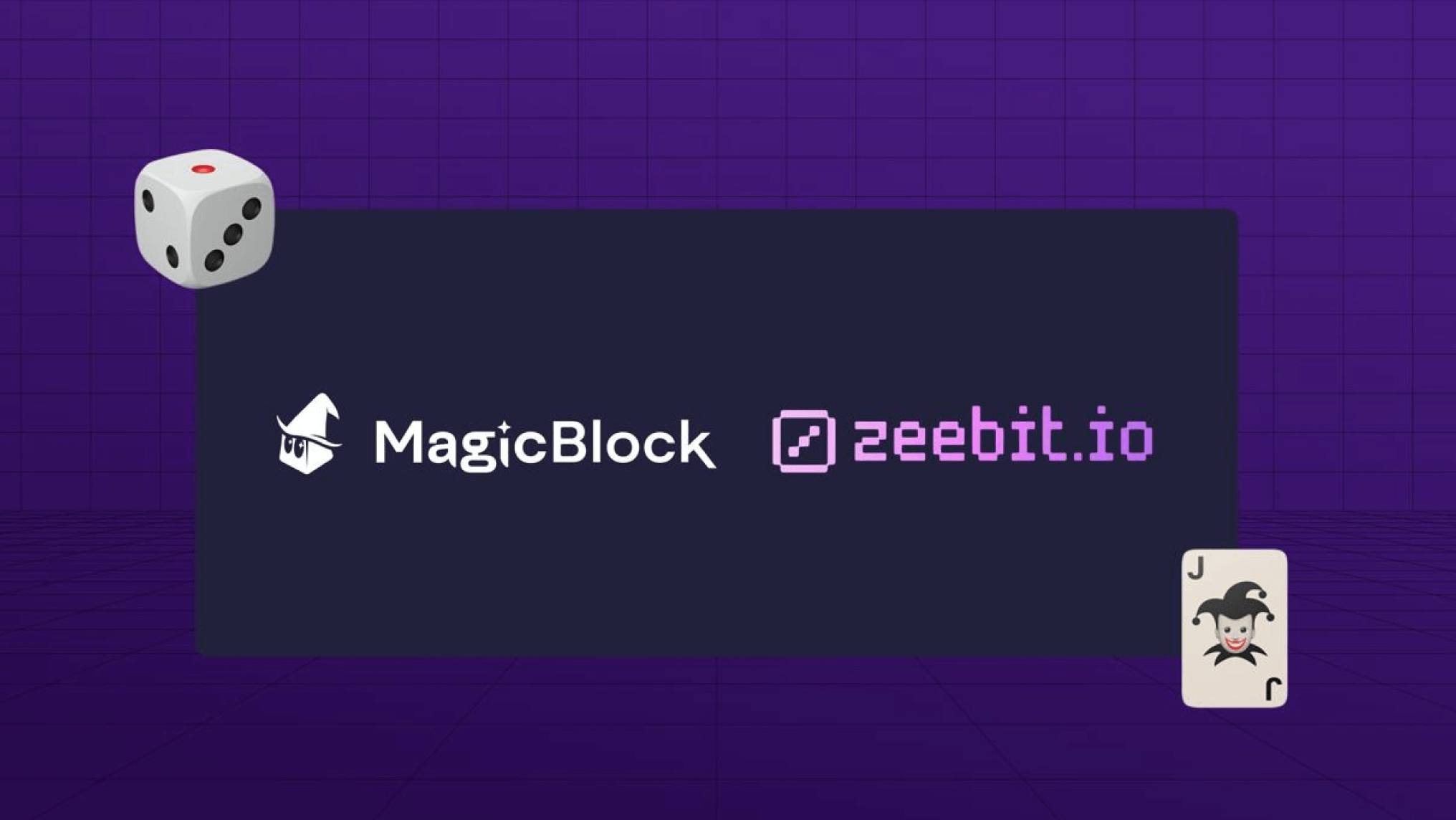
MagicBlock – As the first production-grade platform purpose-built for Ephemeral Rollups, MagicBlock enables developers to spin up high-throughput, gasless execution environments on Solana. Its infrastructure supports real-time dApps, blockchain gaming, and DeFi protocols, offering seamless composability with the Solana base layer. Learn more
-
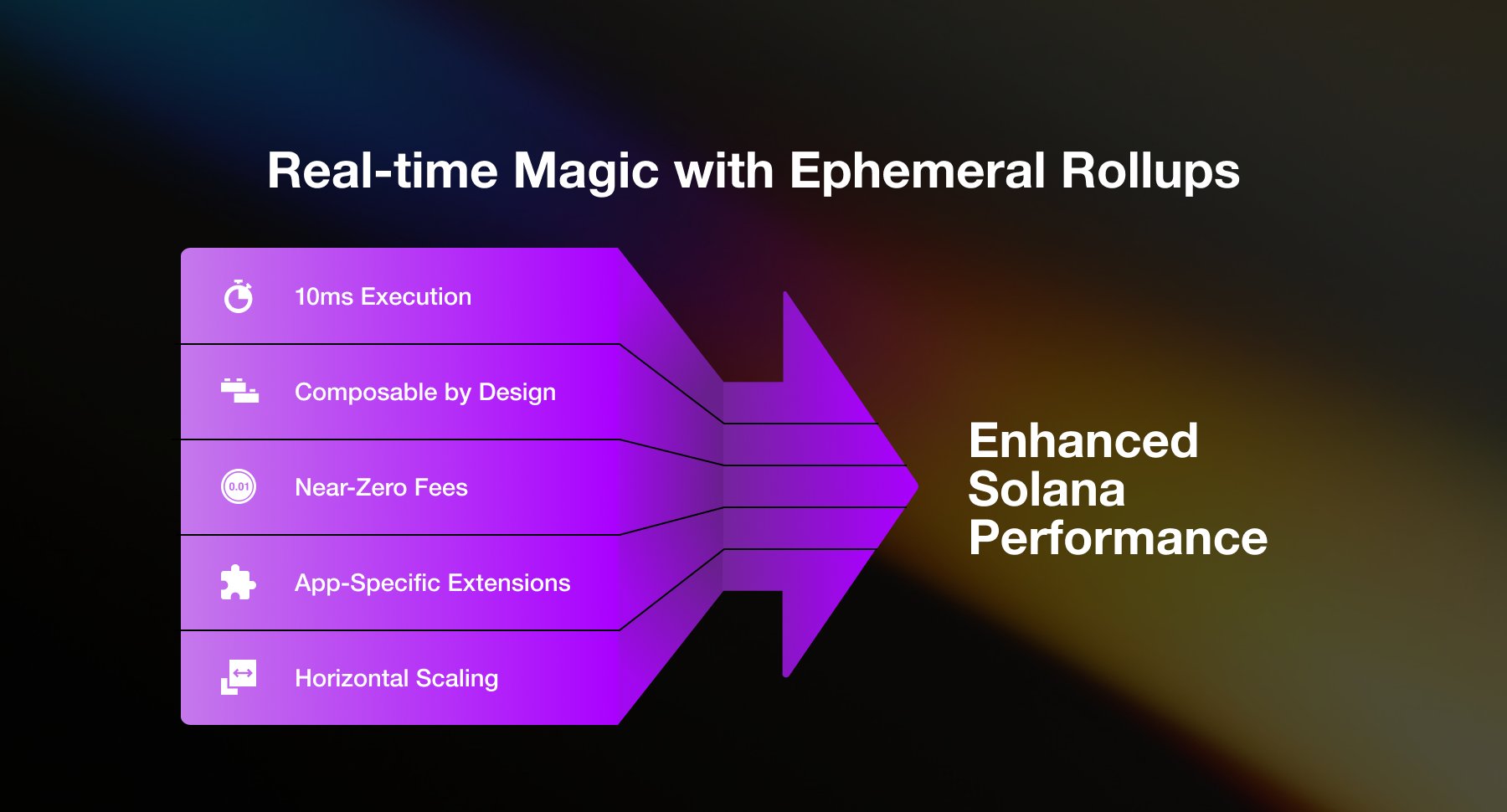
Solana dApps (via MagicBlock) – Several high-performance decentralized applications on Solana are integrating MagicBlock’s Ephemeral Rollups to achieve ultra-low latency and horizontal scalability. This includes on-chain games and financial applications requiring real-time responsiveness and massive throughput. Explore Solana dApps using ERs
-
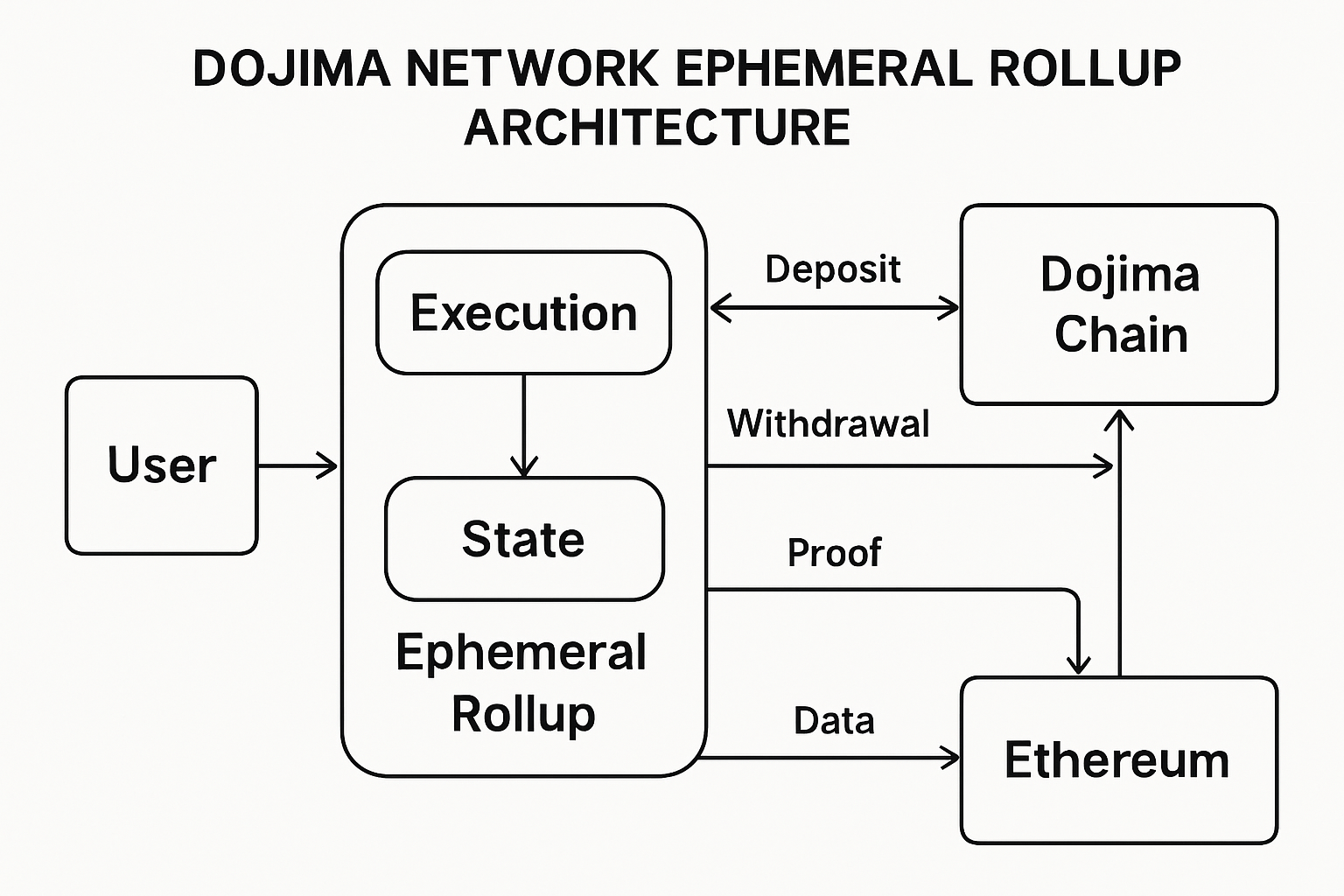
Dojima Network – The Dojima Foundation is actively developing and documenting Ephemeral Rollup solutions to enhance blockchain scalability, focusing on cost-efficient, high-speed transactions for DeFi and gaming. Their research and pilot implementations are advancing the adoption of ERs in multi-chain environments. Read Dojima’s ER insights
-
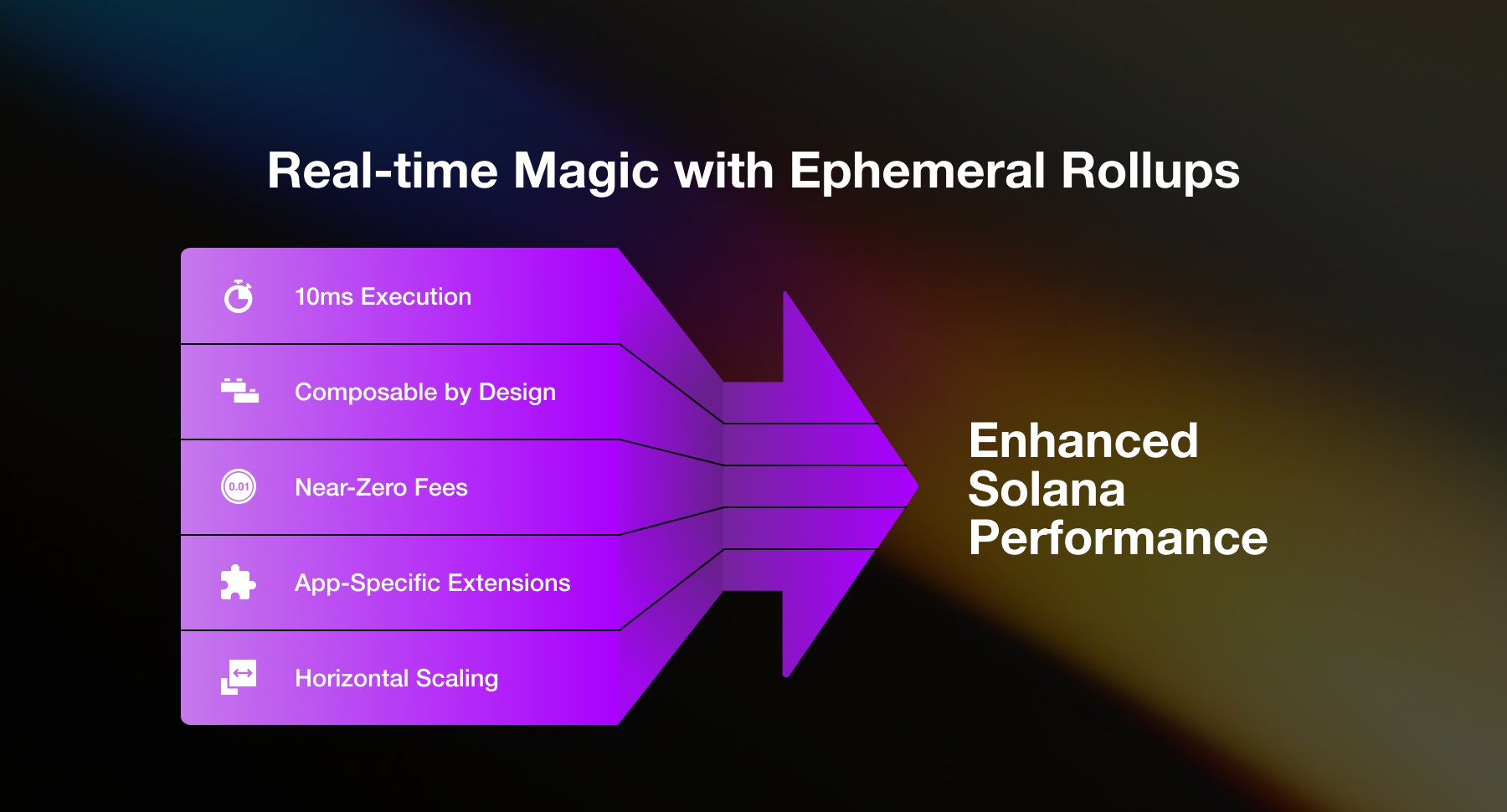
Turbo GameFi Protocols – Next-generation GameFi platforms are leveraging Ephemeral Rollups to enable fully on-chain gaming experiences with sub-50ms latency and zero gas fees. These protocols use ERs to synchronize game states in real time, providing seamless gameplay and blockchain-backed asset ownership.
Challenges and Open Questions
No technology is without trade-offs. The ephemeral nature of these rollups introduces new operational complexities, particularly around session management, data availability, and cross-rollup state integrity. Maintaining composability across rapidly spinning up and down execution environments requires robust coordination protocols and rigorous testing.
Security remains paramount; while fraud proofs provide strong guarantees, the field is still evolving. As ephemeral rollups gain adoption, expect to see further research into optimizing settlement intervals, minimizing attack surfaces, and ensuring seamless fallback to base layers in the event of anomalies.
“The modularity of ephemeral rollups is both their greatest strength and their biggest challenge. Success depends on disciplined protocol design and relentless focus on user experience. “
The Road Ahead: From Experimentation to Standardization
We are witnessing the early innings of a shift toward modular blockchain architecture. Ephemeral rollups exemplify this trend by decoupling execution from settlement, enabling blockchains to elastically adapt to workload spikes without sacrificing core principles. As standards emerge and tooling matures, expect ephemeral rollups to become a default scaling primitive for next-generation dApps.
For those tracking the frontier of blockchain scalability, now is the time to engage with these systems directly, whether by building atop them or by participating in governance and research efforts. The winners in this new landscape will be those who understand not just the technical mechanics, but also the strategic levers that ephemeral rollups unlock for adaptive blockchain scaling.
